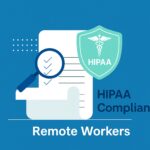Diagnostic provider leadership teams understand the importance of revenue cycle management (RCM) for maximizing reimbursement promptly. Submitting clean claims is one of the most important ways that a diagnostic organization can ensure payment in a timely manner from both private and government insurance payors. Receiving the maximum reimbursement the first time a claim is submitted is crucial to achieving desired operating margins.
How diagnostic providers define a clean claim varies significantly. Some consider claims clean even when they have no apparent errors on the front end even though they may ultimately result in denials in the back end. Allowing claims to be labeled as “clean” when they contain errors means that an organization will never have the analytical insights necessary to improve the quality of the claim information they receive. In its simplest form, a clean claim should be defined as one that has no errors or omissions and can be processed without additional information or verification of information by a human, third-party service, or automation. A clean claim contains all of the following correct information:
- Each procedure code has a supporting diagnosis code that is not expired or a deleted code
- There are no potential issues or questions regarding medical necessity
- The patient’s coverage was in effect on the date of service
- The patient’s insurance covers the service provided
- The claim submission includes all the required patient information such as full name, mailing address, and date of birth
- The claim identifies the payer, including the correct payer identification number, group number, and mailing address
- All required claim information is in the correct field
- The claim is submitted within the timely filing window
To measure how a diagnostic organization is performing when it comes to RCM, an important metric to track over time is the “clean claim rate.” This measure quantifies the rate at which insurance claims have been successfully processed and reimbursed the first time they were submitted. This means it contained no errors, rejection, or need for manual input of additional information. To achieve a high clean claim rate, organizations have traditionally had to work claims manually to:
- Retrieve missing patient information
- Correct errors or information in the wrong fields
- Validate insurance eligibility
- Follow up with physician offices for supporting information.
Submitting clean claims means the claim spends less time in accounts receivable, less time at the payer, and the laboratory or other diagnostic provider gets paid faster. Experts across the industry agree that a clean claim rate should exceed 90 percent. However, based on an analysis performed by XIFIN, specific to laboratory claims, approximately 35 percent of all diagnostic procedures have errors that need correction before they can be reimbursed. This translates to upwards of $20 billion per year in either delayed or permanently lost reimbursement in the US alone. XIFIN also found that 12 percent to 20 percent of all requisitions lack a payer-specific ICD-10 or other information resulting in partial or full claim denial. Many organizations choose to write off these uncollected claims rather than incur the labor costs associated with achieving a clean claim. In contrast, leading organizations are maximizing their clean claim rates and reducing their bad debt without an increase in labor costs by leveraging automation. Real-time connectivity and error correction, integrated patient demographic and insurance discovery, automated supporting document attachment, and portal-enabled patient and client communications all improve clean claim rates without human intervention.
Above and beyond clean claim rates, laboratory and other diagnostic provider leadership teams will find it exceedingly valuable to have analytical insights that:
- Indicate the most significant financial impact or anomalies (either negative or positive) based on a month over month change in allowed amounts by payer and volume
- Demonstrate the number of claims being processed without human intervention as compared to the claims that had errors that required manual intervention
- Identify which team members are performing or (underperforming) on specific actionable error codes and how the fixes are impacting reimbursement rates
- Highlight which physicians and ordering clients are causing the most issues in the billing process due to missing or invalid information that was needed for the claim
Another critical measure of a diagnostic organization’s revenue cycle performance is its “write-off rate.” Write-offs happen when the amount collected for a claim is lower than the contracted pay rate. Under current accounting rules, the amount of those discrepancies should be recorded as bad debt, thus reducing revenue by the unpaid amount. Many legacy billing systems, however, incorrectly attributed the discrepancies to contractual allowance. Consequently, these organizations saw a falsely low bad debt rate and failed to identify potentially recoverable revenue. Relegating under- and non-payments to contractual allowance is not only against current accounting rules but also erases the opportunity to attempt recovery. So while no organization enjoys a higher bad debt rate, the good news here is that correctly identifying these amounts as (potentially recoverable) bad debt, rather than the contractual allowance, enables a laboratory to take steps to recover this otherwise lost revenue.
It is clear that a low level of clean claims directly contributes to higher write-off rates and, thus, lower revenue, profit, and margin. It is a challenge for labs and other diagnostic providers to be promptly reimbursed if they lack accurate patient data. Too often, labs write off balances if they don’t have all of the information needed to get the claim paid, especially if it is a low-value claim. This can be particularly impactful for laboratories associated with hospitals and health systems. More laboratory claims tend to be written off in these cases because the average value of each claim is quite low when compared to other hospital- or health system-related claims.
To ensure that claims are getting handled correctly to maximize timely cash collection, billing and finance leaders can start by asking their revenue cycle management team, the following key questions about write-offs:
- What percentage and dollar amount of my claims end up written off (i.e., what is our write-off rate)?
- Are our claims subject to automated write-offs based on a dollar amount threshold set in the system?
- Are automated write-offs of our claims categorized as bad debt, since no effort to collect has been attempted?
Finally comes the question: Are we using the best RCM system to maximize our clean claims, minimize write-offs, and thus optimize our revenue, profit, and margin? Here are a few questions to ask on that front:
- Does our RCM system automate the correction and completion of patient demographic data?
- Does our RCM system has automated insurance discovery that corrects and completes insurance information?
- Does our RCM system allow the automatic attachment of supporting documentation to minimize denials?
Only by maximizing the clean claims rate and minimizing the write-off rate can a laboratory or other diagnostic provider maximize revenue. A goal of zero percent write-offs is not practical, however. For some very small claims or unpaid balances, the effort to reclaim the reimbursement outweighs the value of the outstanding balance. But an optimized RCM solution with proper automation will help laboratories and other diagnostic providers cost-effectively maximize clean claims and minimize write-offs. This is one of the very best ways to thrive in today’s challenging healthcare landscape.





